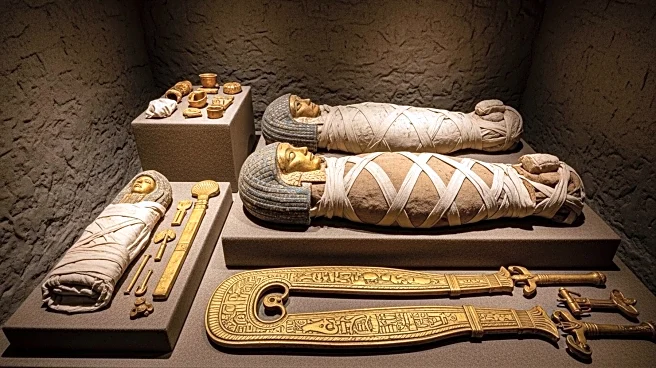What's Happening?
An archaeological team in Turkey has discovered nearly 140 Stone Age artifacts along the Aegean coast, suggesting early humans crossed a submerged land route from Turkey to Europe during the Pleistocene Ice Age. The region, now composed of islands and peninsulas, was once a continuous landmass due to lower sea levels. The artifacts, including cleavers and handaxes, provide evidence of human activity and technological traditions shared across Africa, Asia, and Europe. The study, published in the Journal of Island and Coastal Archaeology, calls for a historical reassessment of human migration routes into Europe.
Why It's Important?
This discovery challenges the established narrative of human migration into Europe, which traditionally emphasized routes through the Middle East and Balkans. The findings suggest a broader range of migratory paths and technological exchanges, potentially reshaping the understanding of early human dispersal and interaction. The presence of complex tools indicates advanced technological capabilities, which could influence theories about the development of early human societies and their adaptation to changing environments.
What's Next?
The researchers plan to conduct further excavations and analyses, including stratigraphic projects and paleoenvironmental reconstructions, to better understand the region's role in human migration. These efforts may uncover additional evidence of early human activity and provide insights into the environmental conditions that facilitated migration. The study encourages a shift in focus to include regions like Ayvalık in future archaeological research.












